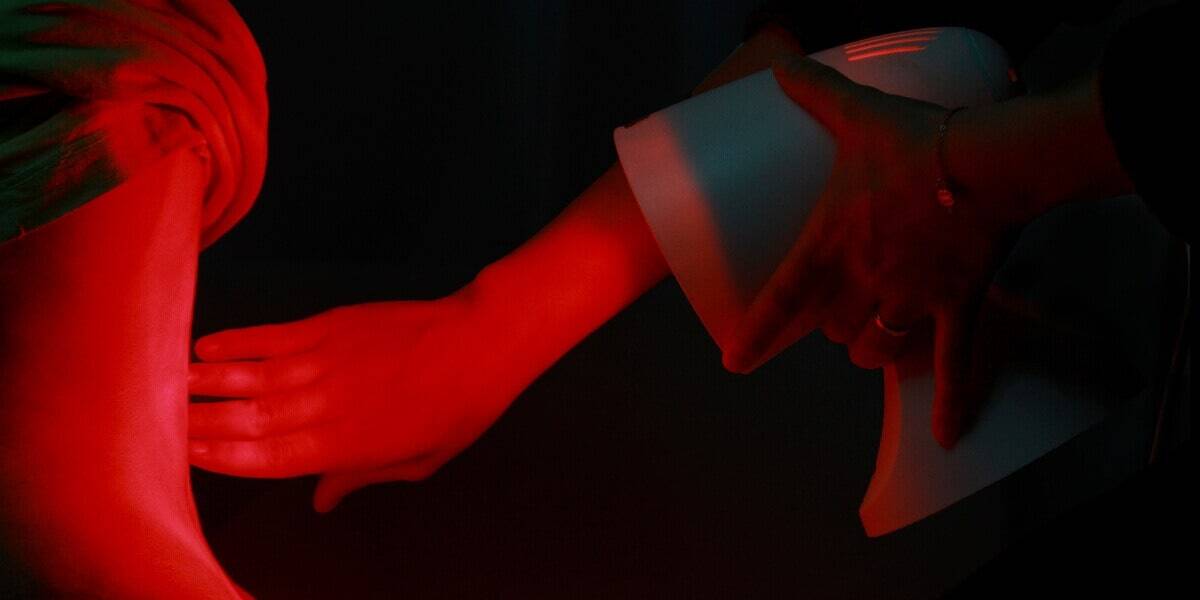
- Posted on
- By TheraLight
- In Red Light Therapy
What Is Red Light Therapy: Benefits, Evidence & Applications
Red light therapy is gaining popularity as a non-invasive treatment for various health and wellness concerns. In fact, internet searches for red light therapy increased by more than 80 percent from 2023 to 2024, and there are no signs that interest in red light therapy will dim anytime soon.
With all the interest in this advanced technology, you might wonder, “What is red light therapy?”
As leaders in red light therapy technology, TheraLight is happy to help you discover how it works, its benefits, and how to use this safe and effective treatment to improve your health and overall well-being. We can provide everything you need to know about red light therapy.
What Is Red Light Therapy?
Light therapy, also known as photobiomodulation therapy (PBMT), has existed for over 100 years. A Danish doctor developed the first light therapy in 1896; treatment involved daily two-hour sessions under an electric light. In the 1960s, the introduction of LED lights revolutionized PBMT, allowing providers to target specific areas of the body and customize treatments for each patient. NASA developed LED light therapy to help heal astronauts who become ill or injured on long-term missions in space. LED (light emitting diode) devices produce precise wavelengths of light for optimal benefits.
Healthcare providers and wellness professionals today provide red light therapy using various devices, from hand-held to full-sized beds. Handheld PBMT devices help treat small areas, whereas red light therapy beds and pods can treat larger areas or even provide whole-body treatments.
As its name suggests, red light therapy uses the power of light to address various health concerns. More specifically, it uses red light to trigger beneficial changes in cells and tissues. Red light therapy devices emit very low heat levels, so therapy does not burn or harm the skin. Moreover, LED therapy does not expose the skin to damaging UV rays.
Light travels in waves; some waves are longer than others – in other words, they have different wavelengths. Scientists measure wavelengths in nanometers (nm).
At different wavelengths, light appears to the naked eye to be different colors. Violet has the shortest wavelength, measuring about 380 nm. Red light has the longest wavelength, at about 700 nm. The wavelengths of orange, yellow, blue, and green are between red and violet. Depending on its wavelength, light may also affect the body differently.
How Red Light Therapy Works
LED therapy harnesses the beneficial effects of light to trigger changes. More specifically, red light therapy penetrates the skin painlessly to reach cells and tissues affected by injury or disease. Once there, the light stimulates the mitochondria, also known as the “power plant” of the cells, because it helps manage cellular energy. Stimulating the mitochondria increases the energy available to cells, which can help cells do their work more efficiently.
Red light therapy works to treat skin conditions by:
- Stimulating the production of collagen, which is a protein that gives the skin its elasticity, structure and strength
- Increasing the production of fibroblasts, which make collagen
- Increasing blood circulation to the treated tissue
- Reducing inflammation in cells
- Treating oxidative stress, which is an imbalance between free radicals that damage tissues and the antioxidants that tame free radicals
Common Applications of Red Light Therapy
Red light therapy benefits nearly every part of the human body, outside and in. LED therapy is a special favorite among skincare providers because it targets several skin concerns, such as:
- Wrinkles and other outward signs of aging
- Wounds and scars
- Sun damage
- Acne
- Hair loss
- Psoriasis
Treatment with red light therapy stimulates the regeneration of skin tissue without creating further damage. The long wavelength allows the healing light to penetrate the skin's surface area to reach the tissue below.
People use LED therapy for other health and well-being purposes, such as:
- Alleviating pain
- Reducing inflammation
- Soothing sore muscles
- Speeding healing in injuries
- Healing cold sores faster and preventing them from coming back
- Easing symptoms of rheumatoid arthritis, osteoarthritis, carpal tunnel syndrome, and more
- Controlling their weight
- Reducing the appearance of cellulite
- Addressing brain concerns, such as neurodegenerative diseases, physical trauma, and mental health disorders
Scientific Evidence Supporting Benefits of Red Light Therapy
Research from the past 20 years demonstrates the benefits of LED therapy. These studies suggest that PBMT may help:
- Promote wound healing
- Reduce some effects of cancer treatment
- Reduce psoriasis lesions and burn scars
- Build collagen
- Relieve some types of pain and inflammation
- Improve symptoms of psoriasis
- Ease neuropathic pain, which occurs when the nervous system is damaged or malfunctions.
Frequently Asked Questions about Red Light Therapy
Is red light therapy legit?
The scientific evidence demonstrating the benefits of red light therapy is impressive. A 2013 study showed that LED therapy increases blood flow, reduces inflammation, increases collagen levels, and boosts the production of fibroblasts.
How long does it take for red light therapy to work?
Many people feel some benefit immediately after their first session. Most people with chronic or acute conditions get optimal results with 15-minute sessions three to five times a week for a few months. The duration of treatment depends mainly on the condition being treated, its severity, and other factors. A healthcare or wellness professional can recommend a personalized treatment plan that evaluates these factors and provides an estimated treatment time.
Can you overdo red light therapy?
Red light therapy is generally safe, but high-intensity light can cause redness and blistering. Always use an FDA-approved red light therapy device for best results and optimal safety, and follow the manufacturer’s instructions.
For more information on red light therapy and its benefits, evidence, and applications, connect with a TheraLight professional.
